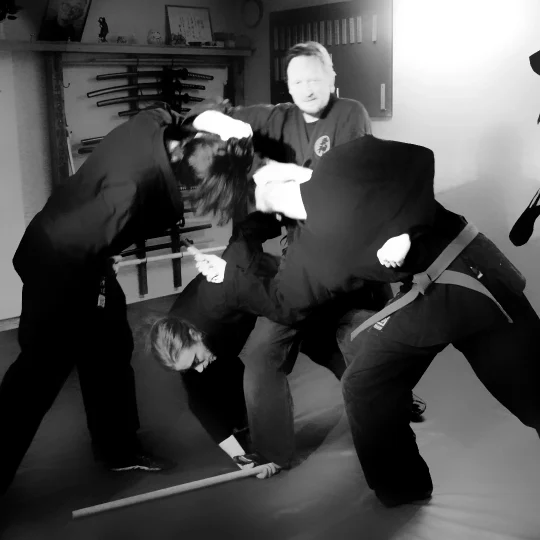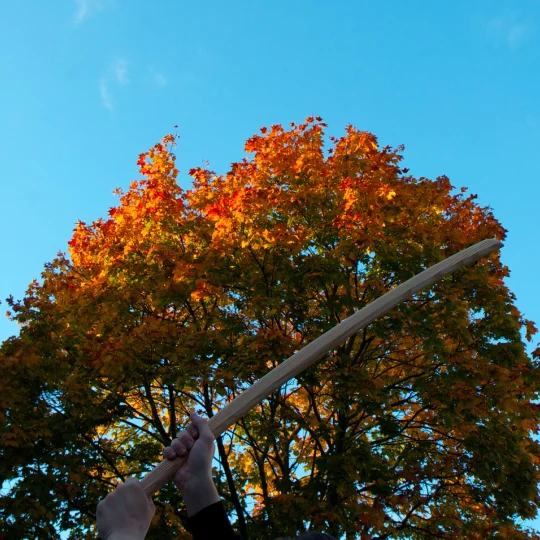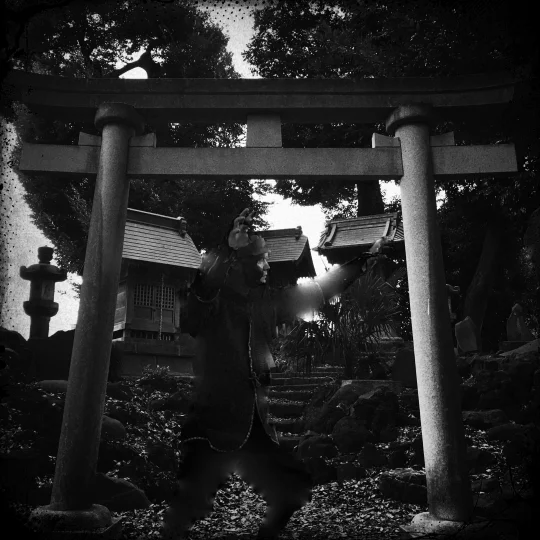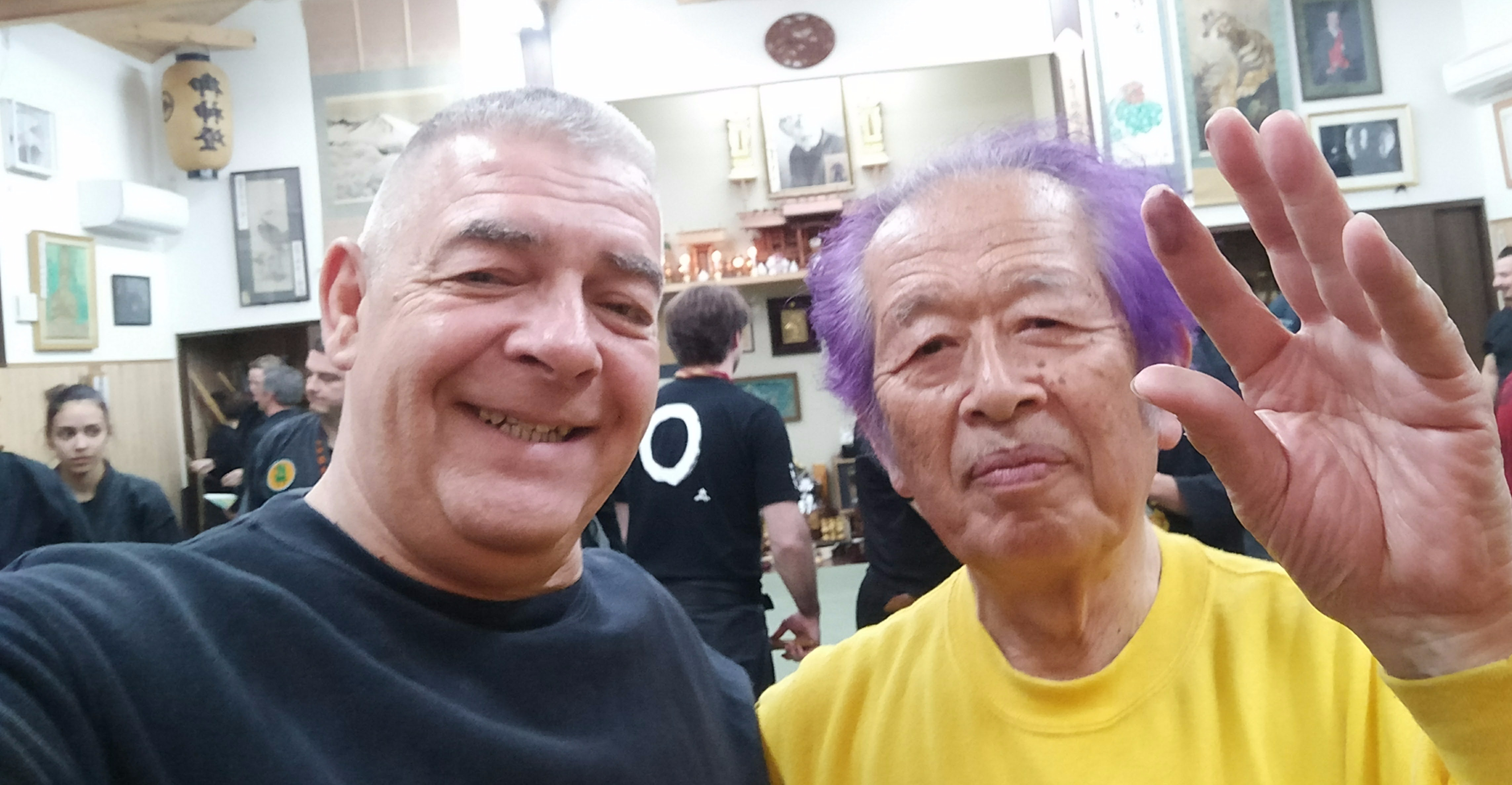The Sound of Bujinkan 変化 Henka
From Bujinkan Santa Monica by Michael
One Friday night back in the old Honbu Dojo, Hatsumi Sensei moved to a very high level of training right from the start. After he asked someone to demo, he immediately went into counter attacks using his fingertips. And he said to be playful.
Hatsumi Sensei painted and hung a scroll in the corner of the dojo. He did this every year to express the yearly theme. This year it was 神韻武導 Shin'in Budō. You can read this as Budō of exceptional artistry. Or, when you look at the characters for Shin'in, it could be a Budō that expresses the sound of the heart, the soul, or even the kami.
 |
| 神韻武導 Shin'in Budō, Bujinkan Honbu. photo Michael Glenn |
Earlier that afternoon, I had made a pilgrimage of sorts to visit 矢切の渡し Yagiri-no-Watashi. The ferry that has been taking passengers across the Edo river for nearly 400 years. The Tokugawa shogunate did not build bridges over rivers to protect Edo. Ferry boats leading to the highway were strictly controlled, but ferries for farmers who had farmland on the opposite bank were allowed.
For people who were not allowed to enter Edo, they would cross on these ferries disguised as farmers. A good use of 変装術 Hensō-jutsu! Maybe a few ninjas made this crossing during their travels.
 |
| My student Jesse waits, 矢切の渡し Yagiri-no-Watashi pier |
This ferry was the setting for the sad love story between Masao and Tamiko in Sachio Ito's novel ``The Grave of Wild Chrysanthemums''. It is also the setting for a popular song of the same name. I was surprised to discover that in 1996 the Japan Ministry of the Environment selected this ferryboat as one of the 100 Soundscapes of Japan.
Besides the sound of rowing, you might hear the rippling water of Edogawa, some black headed gulls, and skylarks. These sounds were like a mediation for me, setting the tone to prepare for the dojo later. Sometimes what you do before and in between classes is almost as important as the training itself.
Now when I show up for a class like this, where Soke is teaching many subtle lessons in his quick and energetic manner, I might have a chance of keeping up. If I can understand just a little of his teaching, my whole trip to Japan will have been worth it.
The sound of training wisdom came just before break time. Hatsumi Sensei was showing a form of 指押さえる yubi osaeru, controlling just like I shared in my training reports from Japan. He grabbed a hold of Nakadai-san and really applied the pain. Nakadai yelped into the rafters from the intensity.
But while it may have looked like the finger manipulation was the key to this technique, Soke had actually shifted his shoulder and chest forward. He did this by dropping his left shoulder and raising his right. This made Nakadai’s 胸捕 mune dori almost useless. And it also fed into 親殺 oya goroshi right under Soke’s thumbnail.
The train from Atago station rumbled and thundered by at just that moment- rattling the whole dojo. Soke just laughed and chuckled his way through two more opponents. It was hard to hear what he said, but I was lucky to be right under him when he explained,
分散させる。変化させる。虚実、な?
bunsan saseru, henka saseru, this is kyojitsu, isn’t it?
Bunsan saseru means you may break up or scatter to create variance. You distribute your response to the opponent in a way that causes the breakup of his attack, his tactics, and even his mind or will to fight. Soke expressed the kyojitsu here by offering his mune on one side, but capturing the oya goroshi on the other.
While henka saseru allows you to create change. The transformation of the technique arises from shin’in. While Nakadai was screaming in pain up into the rafters, Hatsumi Sensei used his whole body to control from that one point. Then he said 次 次 次 tsugi tsugi tsugi Next next next... The kyojitsu is hidden in the Next.
One of my students who made the trip to Japan with me was on his own after that class. I wasn’t very conversational. I sat quietly on the train back to my hotel. I wrote some notes in my composition book. But I paused to listen to the sounds of Japan.
…




 強弱柔剛あるベからず
強弱柔剛あるベからず